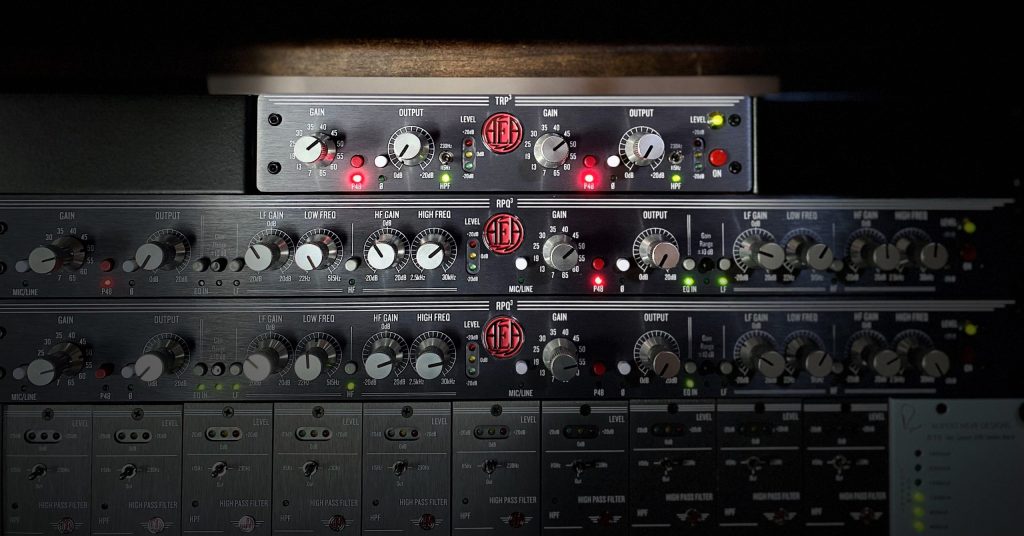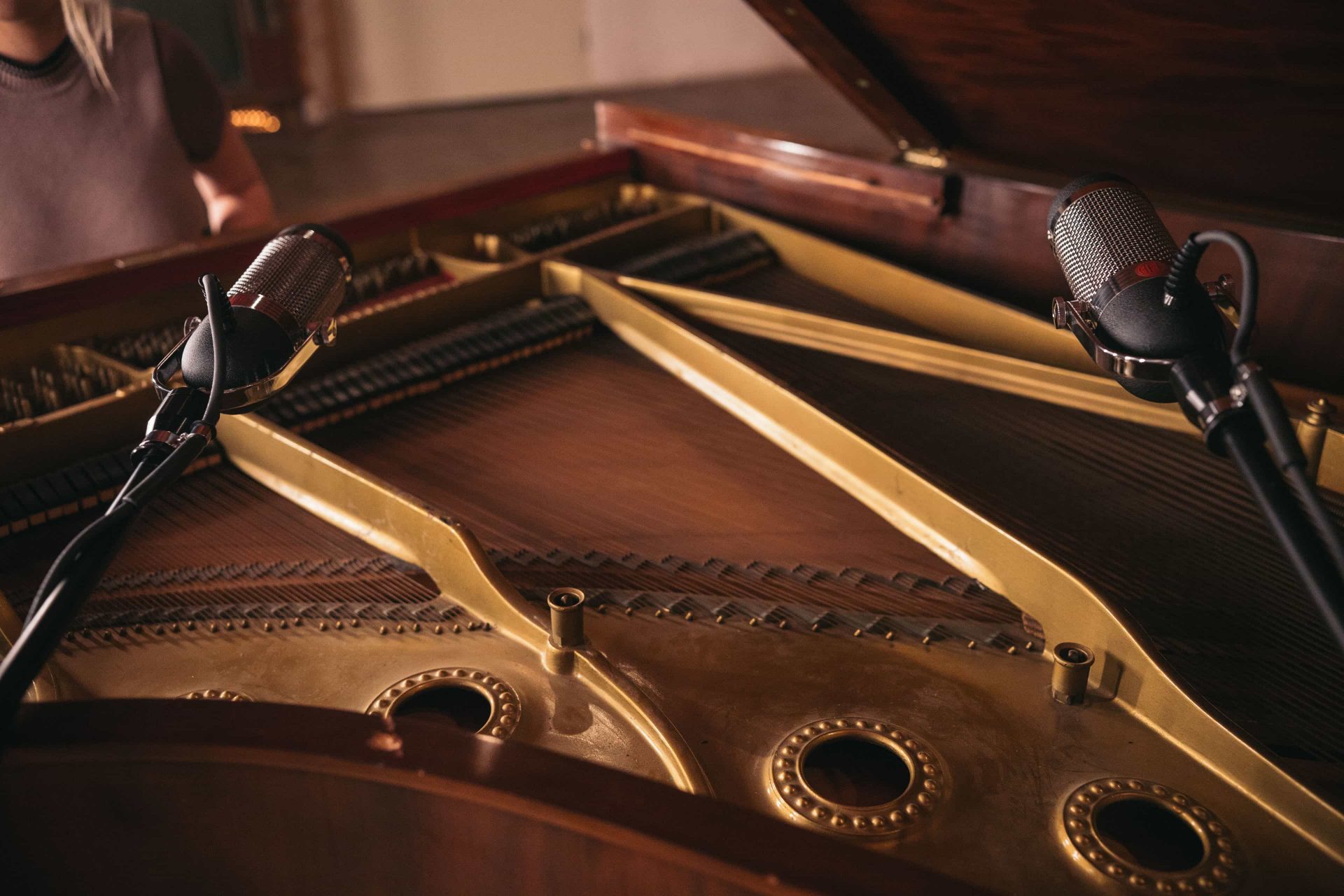

How To Record Piano With the R84
The classic ribbon character of the R84 comprises detailed mid-range, extended lows and a figure-of-8 polar pattern, making it a terrific tool to record a piano.
The R84A is an active version of the R84 that retains the same sonic character of the R84, with an additional 12dB of output and a stable impedance. This gives a consistent frequency response and greater flexibility with different preamps. These techniques and audio samples apply to both the R84 and R84A.

A popular method for recording piano with two R84s is in spaced configuration. In this perspective, a good starting point is to position a pair of R84s about 8 – 24 inches above the strings of the piano with about 24 inches of space between each mic. This technique allows greater flexibility in placement to achieve a different balance of direct sound and indirect sound.
On an upright piano, a recommended position is to place the microphones behind the piano from at least 1 foot away and 6 inches above the ground. The spacing and distance of the two mics are dependent on the stereo image you are trying to capture. This general position will give you less hammer sound and a beautiful tonality.

Blumlein Technique
Try positioning two R84s in Blumlein configuration roughly 1 to 3 feet from a grand piano’s right side. If recording an upright piano, position it above and behind the player’s head. Point the center of the array towards middle c. This method yields a vast stereo spread with a smart blend of direct sound from the instrument and indirect room tone. The array can be positioned closer to the piano frame to increase low-end response or pulled away to gain more room sound.
Mono Piano
Using a single mic to capture the sound of a piano is a common technique for recording a detailed piano sound that easily fits into a dense mix. A common starting point is to position an R84 towards the center of the piano about 1 – 2 feet away from the hammers. If you find that the middle of the piano is too prominent in the mix, try pulling it back further.
Distant Miking
Pianos, like most acoustic instruments, draw substantial benefit from room tone, so capturing that aspect of a piano’s sound is vital. The versatile R84 excels at recording instruments and ensembles from a distance. From as far as 15 feet away, the R84 captures detailed, balanced sound of an instrument section and supplements it with massive room tone.

